12 Facts About Edinburgh Castle
Twelve Interesting Facts About Edinburgh Castle
Most of us think of whiskey, tartans, bagpipes, and castles when we think of Scotland. What most people don’t realize is that today there are more than 1500 castles spread across the lush Scottish landscape. Some of the castles are in ruins, others are used as homes or for hotel castle stays, and some have been turned into museums. The variety of castle architecture is beguiling and reflects Scotland’s turbulent and interesting history.
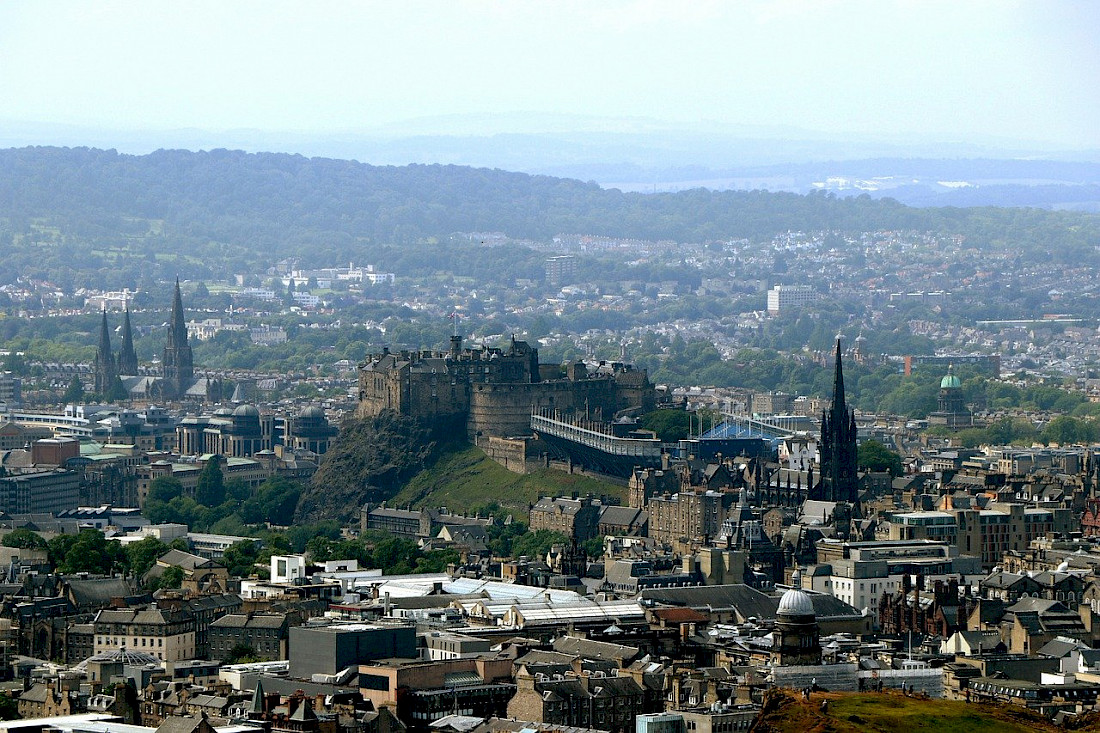
Scotland’s most famous castle is Edinburgh Castle which draws more than two million visitors a year. Dating back to the 12th century this castle has a rich and colorful history, but how much do you really know about this magnificent castle that has sat in the center of Edinburgh for more than 900 years? Here are twelve facts that you might want to keep in mind when touring this iconic Scottish castle.
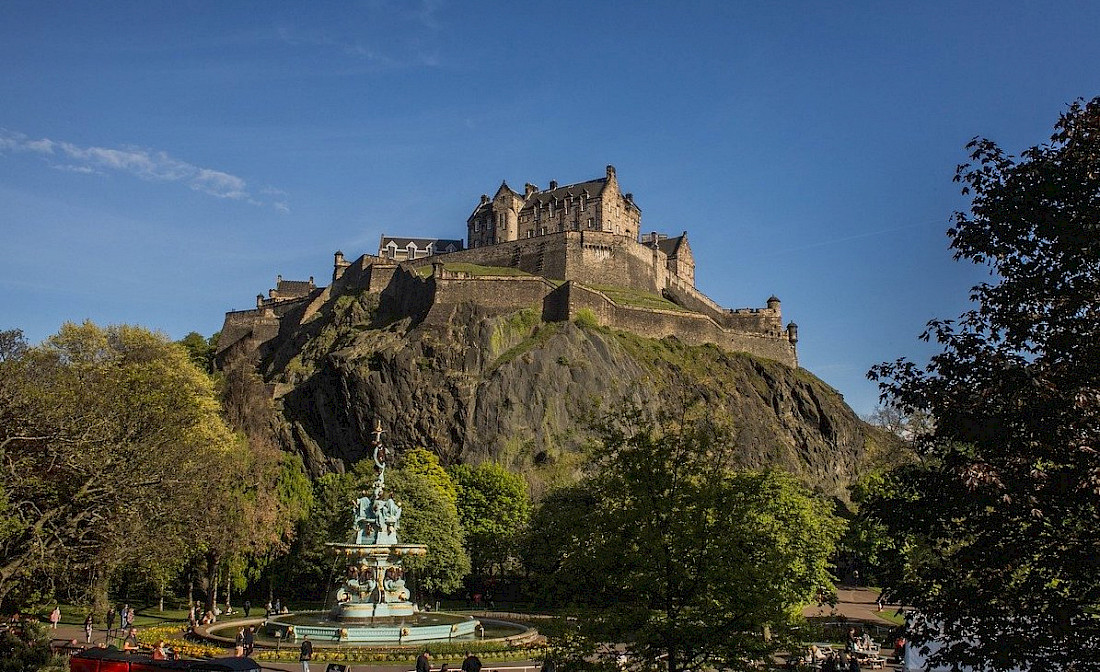
1) Volcano
Looming above the city dominating the Old Town and West Princes Street Gardens, Edinburgh Castle with its excellent defensive position sits on an extinct volcano. The hill it is built on is known as Castle Rock, a volcanic plug that was formed following an eruption more than 340 million years ago. This rock forms an ancient volcanic complex under the center of the city that is constructed on a crag and tail landform created by glacial erosion over and around Castle Rock.
2) The Chapel
Most of the original castle constructed at the beginning of the 12th century no longer exists. The oldest structure from that time that has survived is Saint Margaret Chapel, a royal burial site that was built by King David I in honor of his mother, Queen Margaret that died in 1093. This private chapel completed in 1130 was used in a variety of ways from being the royal family’s private chapel to storing gunpowder. Today the chapel still hosts weddings and christenings.
3) Changing Hands
Edinburgh Castle is the most besieged castle in Great Britain that was attacked 23 times throughout its history. During the Wars of Independence, beginning in 1314, the castle changed hands many times. During the Jacobite Risings in the 17th and 18th centuries, the control of the castle switched back and forth several times between the British and the Scottish. The last siege of the castle took place in 1745 when the Jacobite Rebellions were fought to try to restore the Stuart Monarchs to power.
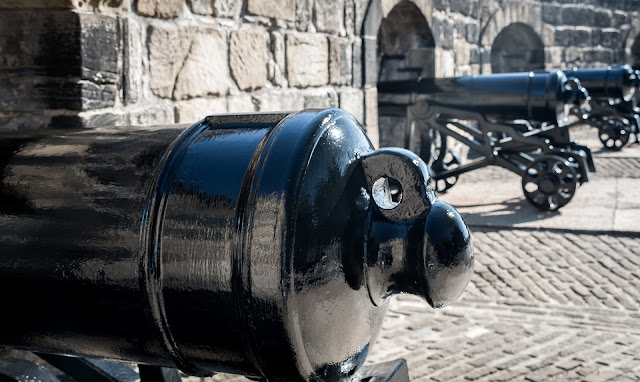
4) A Medieval Gun
The castle’s defenses evolved over the years, and in 1457, the Mons Meg, one of the most powerful medieval cannons ever made was given to King James II. Today it is considered to be the best preserved medieval gun in Europe. This gun was once considered to be cutting edge in military technology and is named after the Belgian town where it was made. When Mary Queen of Scots was married in 1558, Mons Meg was fired over the city in celebration. Today Mons Meg sits outside St. Margaret’s Chapel, just beyond the Whisky and Finest Food Shop.
5) The Tower
Edinburgh Castle has a hidden tower that was re-discovered during excavations that took place in 1912, in the back of a canteen coal cellar window that no one looked through for centuries. David’s Tower was built in the 1380s by King David as part of a reconstruction program of the castle. It stood 100 feet high. It came crashing down during the Lang Seige in 1573. The ruins of the tower were sealed inside a new defensive structure, the Half Moon Battery. The tower also witnessed the infamous Black Dinner of 1440, during which the Earl of Douglas and his brother were accused of treason which was signified by being served a black bull’s head on a platter in front of young King James II. The two were taken into the palace yard and beheaded.
6) Mary Queen of Scots
As you walk into the castle, look above the door to the Royal Palace where you will see the gilded initials MAH - for Mary Queen of Scots and her second husband, Henry Stewart, Lord Darnley. Mary gave birth to James VI in the Royal Palace in 1566. He became the King of Scotland at 13 months old and united the crowns of Scotland and England.
7) Crown Jewels
The Scottish crown jewels, known as the Honours of Scotland, comprised of the Crown, Sceptre, and Sword of State were locked away in the castle after the Union of Crowns in 1707. They were forgotten for more than one hundred years when they were rediscovered in 1818 by Sir Walter Scott. During WWII, the Crown of Scotland was hidden from the enemy in David’s Tower, buried in a medieval latrine closet. They are on display in the Crown Room and are considered to be the oldest Crown Jewels in Britain that were made for James the V, who first wore them at the coronation of Queen Mary of Guise in 1540. Queen Mary of Scots was the first to be crowned using the crown and scepter together in 1543.
8) A Stone of Destiny
The Stone of Destiny is of unknown origin and is the traditional coronation stone of all Scottish royalty. In 1296, King Edward I of England seized the stone and brought it back to England, and had it built into a new throne at Westminster Abbey. In 1950, four Scottish students removed the stone from Westminster Abbey in London. It turned up 500 miles away in Arbroath Abbey. In 1996, the stone was returned to Scotland. It will only leave Scotland for a coronation in Westminster Abbey. Today visitors can see the stone on display along with the Crown jewels of Scotland.
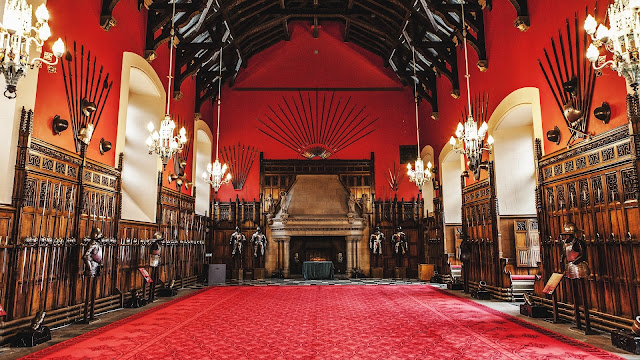
9) Eavesdropping
Located in the heart of Edinburgh Castle, the Great Hall was completed in 1511 by King James IV. With its wooden roof, large beams, and carved stones embellished with the symbols of Scotland. Today it has been restored to what it would have looked like when it was first built. There are displays of weapons, armor, swords, and gruesome Lochaber axes. Make sure you look up at the small window that is high above the fireplace which was a special “spy hole” where King James VI could eavesdrop on conversations taking place below in the Great Hall!
10) Haunted Happenings
With its long and turbulent history some believe that Edinburgh Castle is haunted. Legends claim that a young boy was asked to play the bagpipes as he made his way through the tunnels under the castle. As the boy progressed, the sound of bagpipes stopped when he reached the Tron Kirk. A search party was sent out to find the boy, who just disappeared into thin air. The tunnel was sealed when the boy was not found. Today, some visitors and residents alike claim that they hear bagpipes when walking along the Royal Mile near the castle. A ghostly drummer signaling an attack on the castle has also been heard. In 2003, a construction crew working on the Queen Anne building claimed they were harassed by ghosts of prisoners from the Napoleonic Wars.
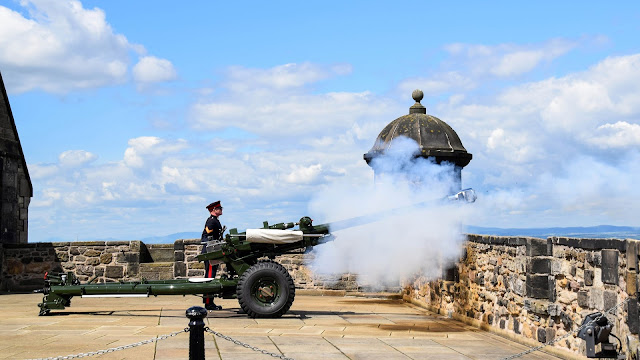
11) Gun Fire
Monday - Saturday at 1 p.m. the One o’clock Gun is fired from the Mill’s Mount Battery as a time signal for passing ships in the harbor. This tradition dates back to 1861. The gun is fired by a volunteer District Gunner from Edinburgh’s 105th Regiment Royal Artillery. The only time that this gun was fired in self-defense was in a 1916 air- raid when it unsuccessfully tried to hit Zeppelins. Today the gun is not fired on Sunday, Good Friday, and Christmas Day.
12) Award Winning Gin
In the shop next to St. Margaret’s Chapel visitors will find a huge range of whiskies including the exclusive Edinburgh Castle 10-year-old single malt. Visitors will also find the award-winning Edinburgh Gin, bottled especially for the castle, and Magnum Cream Liqueur.
Our guided group tours to Scotland always include a visit to this iconic castle which is an unforgettable experience that is not to be missed.

